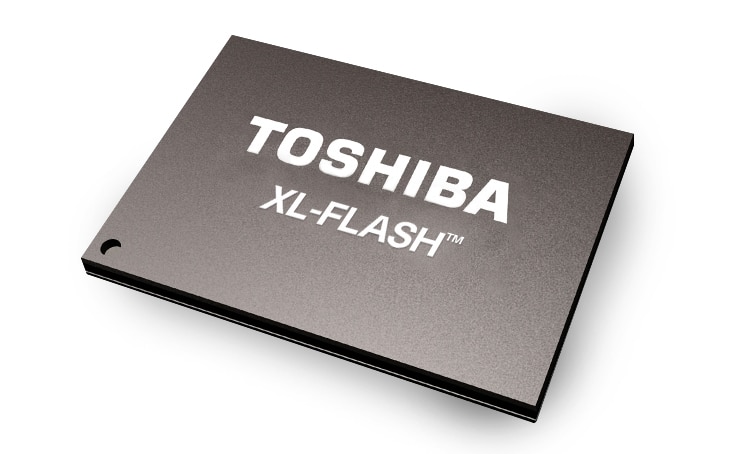
Today Toshiba memory America, Inc. announced the launch of its Storage Class Memory (SCM) solution, XL-FLASH. XL-FLASH is based off of Toshiba’s BiCS FLASH 3D flash memory technology with 1-bit-per-cell SLC. The new SCM technology aims to bring high performance to the enterprise while cost-effectively reducing latency.

What is Toshiba XL-FLASH?
Storage Class memory is also referred to as persistent memory (or as we often refer to it, PMEM). SCM has the ability to retain contents similar to NAND but from a performance perspective, sits in the space between DRAM and NAND. DRAM still brings much faster performance but at a premium that doesn’t appear to be going down anytime soon. SCM adds a new layer or tier to the storage hierarchy at an affordable cost. SCM also brings higher storage capacities than DRAM and higher speeds (with reduced latency) than 3D NAND.
Key Features include:
- 128 gigabit (Gb) die (in a 2-die, 4-die, 8-die package)
- 4KB page size for more efficient operating system reads and writes
- 16-plane architecture for more efficient parallelism
- Fast page read and program times. XL-FLASH provides a low read latency of less than 5 microseconds, approximately 10 times faster than existing TLC
The initial roll out of Toshiba’s XL-FLASH will see SSD formats. However, the future could potentially see the SCM go to the memory channel sitting on the DRAM bus, similar to an NVDIMM. Toshiba will be building on its long history of NAND (as they claim to have invented NAND and announced the 3D flash memory first) to the SCM market.
Availability
Toshiba will begin sampling XL-FLASH in September, with mass production expected to be underway in 2020.
Sign up for the StorageReview newsletter
